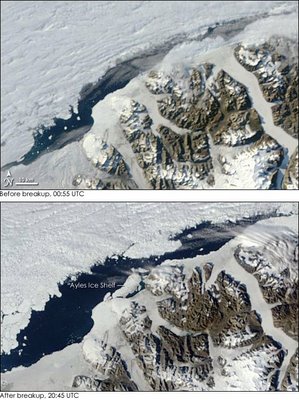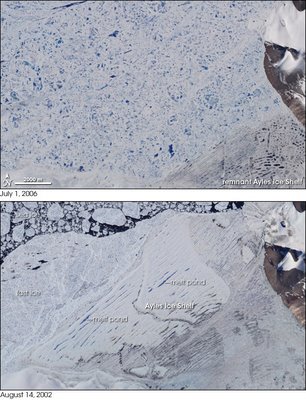Trying to decide what to discuss tonight...
Odd Rooster isn't it? I think it is Japanese species.
My first instinct is to do this tomorrow night. There is some misunderstanding to species demise which I need dispel. It goes like this, where everyone is stating 'Global warming is no big deal and humans will survive, the real concern is species demise other than human. The catch is that IF these 'lower' species had more time to adapt Earth would be doing just fine even with the higher temperature climate." That is incorrect yet it is a widely held belief. I think that is what needs the most attention this week. The topic has been set aside so I could attempt to save human lives exposed to war. Go figure, huh? Trading immediate survival for the later discussion of Earth and it's ability to support life at 98.6 Fahrenheit.
I'd like to touch briefly on Iraq. The war is over. The USA is out of that country. That seems evident from all aspects. The Democrats did a great job. A presence in a majority has scared sense into a corrupt and criminal White House. The 'show' going on in Iraq now with the USA forces and Bush's 'face saving' maneuvers is just to provide a 'rational' for leaving as if the USA has finally declared "Mission Accomplished."
The presidential field for 2008 seems to be wide open.
Not really.
I believe men like Senator Brownback are using this 'opportunity' to appear far more worthy of his Senate seat than his constituency can imagine. He is an example of a 'fading' Republican. He has cast his 'image' and 'vote' so much in the Bush shadow that he is forced to take up the 'attempt' for a presidential nomination to just reestablish his legitimacy for his Senate seat. This past election highly conservative Senators found their winning margin to be far less than they are comfortable with and for that reason they are feeling insecure in their political 'careers.' I didn't now SERVING this country was a career to begin with it, but, to some it is. Orin Hatch really should go away already. Love Senator Bird, though. He held the constitution in his heart during this very trying period in the USA as he maneuvered through very tortures waters. Love the guy. When I heard him speak, I heard Thomas Jefferson and Benjamin Franklin from beyond the grave.
But, these men that are running like Brownback, are running against a voting record they want to recreate. They'll even say that Mr. Bush left Iraq prematurely and lead people to believe we will be back there in a sometime in the near future, because of the majority Democrats now. As a matter of fact to insure the Neocons and conservative Christians are 'in tow' someone like Brownback will allude to a return to those directives IF of course there is a return to the majority of Republicans as in the 'good days' of Bush.
Back Sunday at 8:30 PM.
Peace
Shalom





